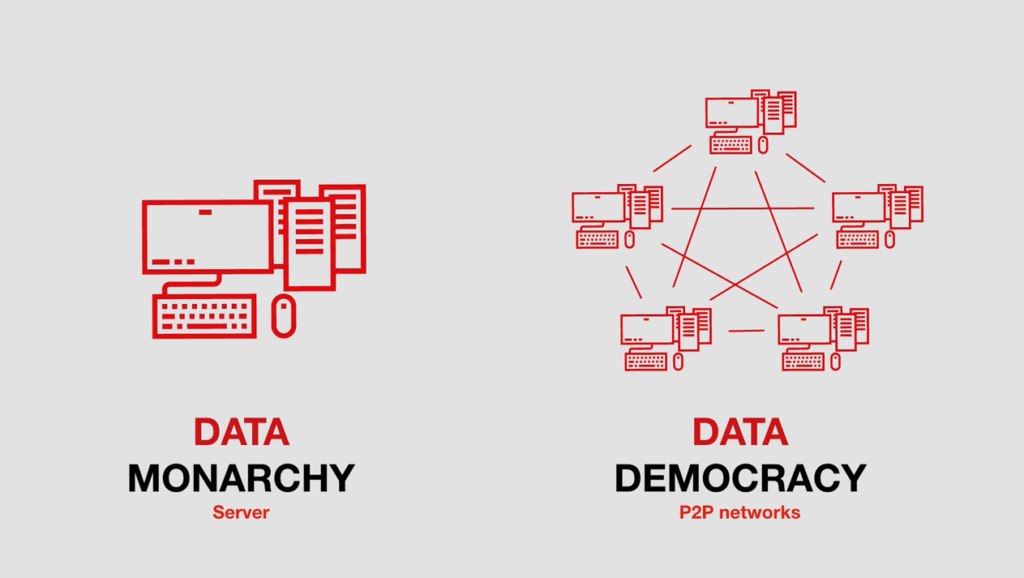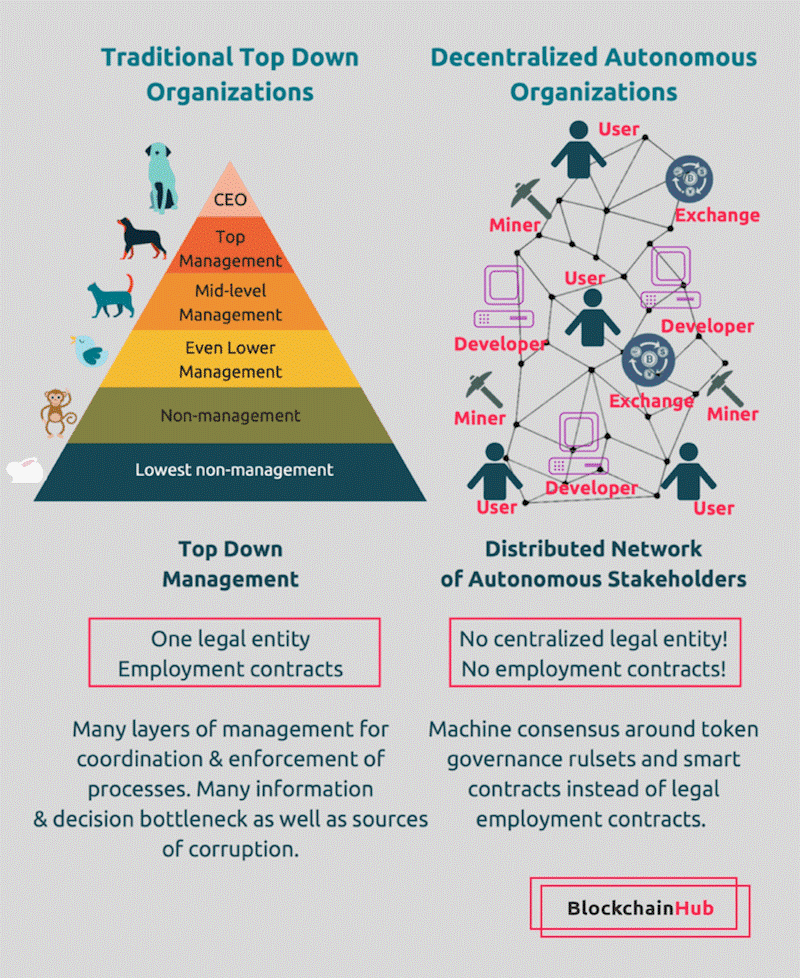Web 2.0 has seen the role of internet in our lives shift dramatically – evolving from a simple source of information, to the most essential feature of our working and social lives.
Through the development of social networks, mobile connectivity and cloud technology, Web 2.0 has become a 24/7 feature of our lives – allowing us to connect to people in all corners of the earth, whether it be for social, or business-related reasons.
It has made our world increasingly smaller and has assisted in the growth of a global economy.
As our lives become increasingly more exposed to and dependant on the internet, a core concern has continued to arise – data security.
Before the internet, it wasn’t too difficult to keep your life private, but as we continue to upload more pieces of our own personal data, it is imperative that we ensure that this data is managed responsibly.
That’s where Web 3.0 comes in – a development which promises a more secure and efficient internet, through peer-to-peer (P2P) networks which don’t require third parties.
No longer will Facebook and Google be able to influence what you learn, how you vote, and (most importantly) what you buy – Web 3.0 will provide a human-centric and privacy preserving framework for the next evolution of the internet.
As a follow up note to Max’s Web 2.0 missive, today we will cover Web 3.0 – how it functions, why it matters, and how to invest.
Decentralised Data Networks
To truly understand what value Web 3.0 can provide, we first have to take a look back at how data is currently transmitted via the internet.
Whenever you access a website, the owner of that website has the right to store all of the data you transmit – whether it be the parts of the website you access, the terms you search, or the items you buy.
Whilst we may not see this as much of a threat when we simply browse through the internet or making small purchases – it adds up and can enable companies to gain a greater understanding of certain consumers, allowing them to influence what we buy, and even how we vote.
The danger of such possession of data was highlighted through the exposé of Cambridge Analytica in the Netflix documentary, “The Great Hack”. Cambridge Analytica claimed to have 5,000 data points on every U.S voter and were able to influence dozens of elections around the world through curating social media content (in conjunction with Facebook) which would most appease to each voter’s personality profile – very Big Brother-esque.
All of this was able to occur because of the centralisation of data – we ourselves don’t own the data we transmit onto the internet.
What Web 3.0 proposes to offer, is an internet devoid of centralised and controlling bodies, where data doesn’t have to pass through centralised servers, but is instead transmitted in P2P networks.
This creates the concept of data democracy, where individuals will be able to own their own data and have control over where their data is distributed.

Sounds like a pretty good deal doesn’t it?
But how exactly does it work, and why isn’t this the system we began with?
Web 3.0 is built on top of decentralised data networks.
These networks are:
- Open: built from open-source software by a community of developers with full transparency
- Trustless: can operate publicly or privately without a trusted third party
- Permissionless: any user can participate without authorisation from a governing body
These data networks are owned and operated by the users – facilitated through blockchain technology.
Blockchain technology is able to take the role of centralised servers given its ability to act as an incentive machine.
Those users who ensure the ongoing operation of certain websites through providing computing power (think 1,000 individual home computers replacing a centralised server) can be rewarded in their efforts through the issuance of programmatic income.
As one example, this income could come in the form of advertising revenue, where these revenues would previously go to the owners of the website/server.
This model can be seen partially through Brave Browser – which provides an alternative to Chrome and Safari, and allows users to either see no advertisements, or receive 70% of the advertising revenue from the ads which appear on their browser (the other 30% going to Brave). Whilst it is not completely decentralised, it is the first steps towards a decentralised internet.
Decentralised Autonomous Organisation (DAO)
Decentralised Autonomous Organisations, or DAO’s, are quickly becoming the business model of choice for Web 3.0.
DAO’s are entities defined by rules encoded in transparent computer programs, controlled by its members/users, and unable to be influenced by a central authority.

Think – if Facebook were to be completely decentralised, where users could tailor the advertising content they see, and restrict their own data from being distributed to other companies, where the users themselves would also be able to vote on any proposed changes made to the social network.
This could soon be a reality, where Jack Dorsey, CEO of Twitter is working on a decentralised social network, “Bluesky”.
Investing into Democracy
Investments into Web 3.0 are tricky.
Traditional businesses have the primary goal of enhancing shareholder returns.
Web 3.0 purports to distribute these profit seeking activities out to customers through decentralised power structures.
At the core of Web 3.0 is open-source programming, which is difficult to monetise significantly – given your intellectual property (IP) is accessible to everyone.
This isn’t exactly a concept which suits existing capital markets or current centralised business models, however there are still ways in which investors can gain exposure.
- Cryptocurrencies will be the native currency for Web 3.0
Cryptocurrencies and Web 3.0 go hand in hand – offering a decentralised and autonomous medium of exchange, disconnected from fiat monetary systems controlled by centralised authorities.
Within the cryptocurrency space, certain Web 3.0 applications like Filecoin are already in operation.
Filecoin provides decentralised file storage and data management networks. Users are able to offer excess hard drive space to the market, where you can store other people’s data (paid for in the native FIL token). You are unable to see the contents of this data (given it is secured by the blockchain), and fees are similar to that of Dropbox, AWS and other cloud storage services.
It is an extension of the sharing economy, where like Airbnb, users are able to earn revenue from an underutilised asset – in this case, excess hard drive space.
Whilst you can’t invest directly into Filecoin and other Web 3.0 crypto protocols through traditional capital markets, Bitcoin still offers some of exposure to this trend, given it operates as the reserve asset within the crypto world.
If compared to a gold miner – a gold miner wouldn’t want to sit on solely gold reserves – they need to hold cash to ensure greater stability and to pay for operating expenses.
The lowest cost Bitcoin ETF available to most investors is the Galaxy Bitcoin ETF (TSE: BTCX).
For more details on cryptocurrencies, please read our below notes:
- The Building Blocks of our Future: Cryptocurrencies (Part Two)
- The Building Blocks of our Future: Investing in Cryptocurrencies (Part Three)
- The Future of Finance
2. Web 3.0 relies on computing power
In the movement from Web 2.0 to Web 3.0, there is a shift away from centralised data structures, and towards decentralised data structures.
The contribution of computing power will be essential, and as such, companies like Nvidia (NASDAQ: NVDA) and Qualcomm (NASDAQ: QCOM) will be well placed to benefit.
As we have covered previously, GPU’s and CPU’s serve as the basis for almost all technological innovations, including things such as Artificial Intelligence, self-driving cars and robotics.
For more details, please read our below notes:
3. Blockchain technology will serve as the basis of Web 3.0
Blockchain technology is at the core of Web 3.0, and as such, those companies at the forefront of these innovations are set to benefit.
Investable opportunities include the Siren Nasdaq NexGen Economy ETF (NASDAQ: BLCN) and the Amplify Transformational Data Sharing ETF (NYSE: BLOK).
For more specific details on blockchain technology, please read the below note:
A Dominant Societal Trend
As corporations have become increasingly bigger and more powerful, society has continued to raise concerns over privacy, and the ability of a few corporations to wage influence on almost all facets of our lives.
These societal trends will continue to impact these mega-companies – whether it be through regulatory reform or changes in consumer habits.
Web 3.0 could provide a pathway to reducing the power of these corporations, who currently have a stranglehold over our lives – making it almost impossible to live without them.
Whilst it has the potential to be a “once in a lifetime investment opportunity”, Web 3.0 it also falls within a system completely foreign to many, and as such in-depth understanding is required before embarking into an investment.
The views expressed in this article are the views of the stated author as at the date published and are subject to change based on markets and other conditions. Past performance is not a reliable indicator of future performance. Mason Stevens is only providing general advice in providing this information. You should consider this information, along with all your other investments and strategies when assessing the appropriateness of the information to your individual circumstances. Mason Stevens and its associates and their respective directors and other staff each declare that they may hold interests in securities and/or earn fees or other benefits from transactions arising as a result of information contained in this article.



